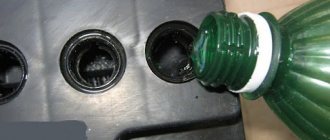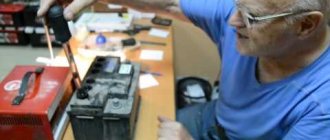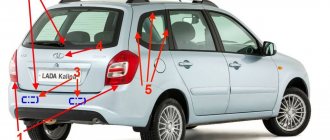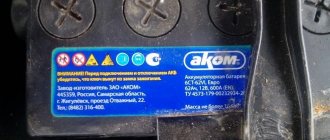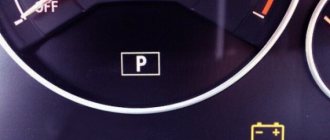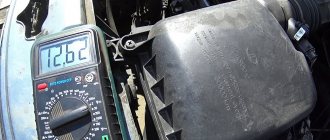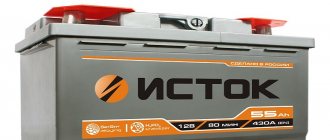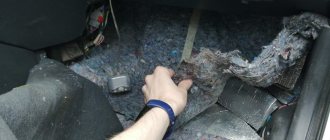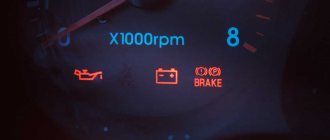If you do not monitor the electrolyte level, premature destruction of the battery plates begins. At the same time, you cannot overfill the water either - then the battery capacity drops, and in winter there is a risk of the electrolyte freezing.
You need to add distilled water to a level of 1.5-2 centimeters above the edge of the plates or 0.5 cm above the special indicator (“reeds”). The goal is to achieve a battery electrolyte density of 1.27 g/cm³ .
Do you know the correct level of electrolyte in the battery, how to determine it, how to maintain it at the required level, what to add and how to do it? No - then read the article.
I poured water into the battery - what should I do?
Using a hydrometer, excess water is removed
If there is more water in the battery than needed, it will negatively affect its performance. Firstly, the density of the electrolyte will be reduced, which means that its power will decrease and it will perform worse. Secondly, this reduces its resistance to freezing. A battery with excess water in the electrolyte can simply freeze at a temperature of minus 15-20 degrees!
If you have overfilled the water, it is very easy to correct the situation. Use a quality hydrometer, bulb or syringe to extract some of the water without tilting the battery. Remove water until it reaches the required level. You will not reduce the density if you do this right away because the mixing of water and electrolyte occurs very slowly.
How to check the electrolyte level in a battery?
An example of an acid battery with a built-in indicator showing the electrolyte level
There are three ways to find out the electrolyte level in the battery. In two cases, there is no need to remove the battery from the car. After all, before measuring, you should take a closer look at the battery itself.
Firstly, some serviceable car acid batteries have a special indicator. It shows several of its states: normal, low electrolyte level (you need to add water), low electrolyte density (you need to charge). Secondly, some batteries with a white or light-colored case have MIN and MAX marks. Such batteries allow you to assess the electrolyte level by eye, thanks to the relative transparency of the case.
But most often the electrolyte level is determined by visual inspection . To do this, remove the battery from the car, unscrew the caps from the “cans” and look inside. Normal or reduced levels can be determined in two ways.
What is the normal electrolyte level in the battery?
How to add distilled water when the level mark is missing
Some batteries have special “tab” indicators. They should be covered with electrolyte by 0.5 centimeters, but no more. If there are none, then be guided by the immersion of the plates in the liquid. The normal electrolyte level should be 15-20 millimeters above the edge of the plates . If the plates are not coated, this is very bad; the critically low electrolyte level should be restored immediately. But in order to understand what to pour, water or acid, and how much to add, you should measure the exact level and density of the electrolyte!
How and what to measure
To determine how much fluid is in the battery, special glass measuring tubes from Soviet “battery kits” are used. Or you can take the body of a regular transparent plastic pen. Make a mark on one edge at a level of 2 centimeters from the edge (with a notch or marker). Insert the tube/handle into the jar, pinch the top edge to block the air and lift up. Now visually assess the liquid level - how much lower it is than 2 centimeters.
Electrolyte level gauge
Checking the electrolyte level with a ruler
A clear example of how to measure electrolyte using a pen
During the inspection, you can also assess the condition of the electrolyte. It must be transparent. If the liquid is cloudy or dark, it means destructive processes have begun in the battery and further manipulations do not make sense. The battery needs to be replaced.
The density of the electrolyte can be measured either with a hydrometer (most often used) or with a refractometer. You can purchase it at most auto supply stores and it will be useful for assessing the quality of not only this, but also other vehicle fluids.
To ensure accurate measurements, you need to check the electrolyte level and density only after the battery is fully charged from the charger!
How much water to add to the battery
How much distilled water to pour into the battery will depend on its capacity. Since the larger the battery, the more electrolyte it contains. Accordingly, the answer to the question “how much distilled water is in the battery” may be different. Moreover, the volume depends on the battery design and may differ between manufacturers. The table shows average values for batteries of different capacities.
| Battery capacity, Ah | How much electrolyte should be (total volume), l | How much water should be in the battery, l |
| 55 Ah | 2.5 l | 1.63 l |
| 60 Ah | 2.7 - 3 l | 1.76 - 1.95 l |
| 62 Ah | ≈ 3 l | 1.95 l |
| 65 Ah | ≈ 3.5 l | 2.28 l |
| 75 Ah | 3.7 - 4 l | 2.41 - 2.60 l |
| 90 Ah | 4.4 - 4.8 l | 2.86 - 3.12 l |
The difficulty is that these numbers are not applicable in practice. They could only be useful if you completely drain all the electrolyte, add water and fill it back. But doing this is highly not recommended! Also, such data can be useful if the level was not just low, but critically low - that is, practically only acid.
Let's consider this case using the example of a popular 65 Ah battery, which should contain 3.5 liters of electrolyte. If the density test showed 1.4 g/cm³, which means a complete absence of water in the composition, then you need to add water in an amount of 65% of this volume. 3.5 liters * 0.65 = 2.28 liters (approximately 460 ml in each jar). If the density there is 1.3 g/cm³ and there is not enough liquid 1...1.5 cm on top of the plates, then we simply add water to that level. This will be the answer to “how much water should be poured into a 65 Ah battery.”
How to properly add distilled water to the battery?
Pour in distilled water with a syringe so as not to overfill
The algorithm of actions looks like this:
- Let the battery sit for 6-8 hours at room temperature.
- Clean the battery cover and wipe it with a soda solution so that when unscrewing the plugs, dirt does not get inside.
- Unscrew the plugs and check the electrolyte level as described above. The test must be done on a flat surface for accurate measurements.
- Start adding distilled water little by little to the desired level. It is very convenient to add and remove excess using a hydrometer. You can also use a syringe.
- Tighten the plugs and leave the battery to stand for 6-8 hours - the process of mixing water and electrolyte takes time.
- Charge the battery. Charging must be stopped when rapid electrolysis occurs (after the electrolyte boils).
- Measure the density of the electrolyte with a hydrometer. It should be at a normal level of 1.27-1.28 g/cm3. Such a battery can be installed on a car.
Perform all operations wearing gloves and well-ventilated areas!
Why do you need to add only distilled water?
Only distilled water can be used in the battery. Because any other water inevitably contains impurities - chlorine, calcium, magnesium, salts and other substances. All foreign impurities that get into the battery will enter into chemical reactions and accelerate the destruction of the plates! Therefore, you need to use exclusively distilled water, which consists only of hydrogen and oxygen and does not have any unnecessary impurities.
You can find a lot of advice online about what water you can use instead of distilled water (melt, rain, condensation from an air conditioner, etc.) or make your own distillate. But it is not recommended to use such water. It is still impossible to achieve the quality of industrial distillation. Its price is not significant enough to save on it. Insufficiently clean water can ruin your battery. Therefore, just buy distilled water from retail outlets you can trust.
Is it necessary at all or not?
Topping up the device is always necessary when the hydrometer detects an increase in the density of the composition. If this is not done, the battery will overheat greatly. All this will eventually lead to failure.
If you do not systematically add distillate to the battery when the acid saturation inside it increases, then the battery life will be reduced several times.
Attention! The purified aqueous composition must be added to the device to prevent exposure of the lead plates. If you don't do this, they will quickly collapse. The result will be the failure of the entire mechanism.
